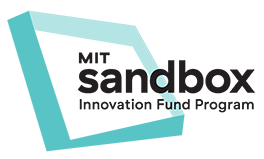MIT DHIVE catalyst
track
A Deep Dive into Healthcare Entrepreneurship
The MIT DHIVE Catalyst Track, offered in partnership with MIT linQ’s Catalyst program, is a new and exciting internship opportunity need-driven biomedical technology innovation. Interns discover how unmet needs are identified and evaluated as innovation opportunities. Through this process, interns will assess the current solution landscape, identify gaps, assess the value of filling those gaps as the basis for developing student-led entrepreneurial opportunities. The partnership with MIT linQ’s Catalyst program provides a unique chance for interns to work within a strong international network of diverse experts from medicine, engineering, business, and healthcare.
See an overview of potential project areas.
Applications are now closed\
Dive into Healthcare Innovation and Venture Exploration (DHIVE)
View Other DHIVE SUMMER 2022 Tracks:
Down Syndrome & Similar Disabilities
Inflammatory Bowel Disease
Long Covid & Lyme
DHIVE Catalyst IAP 2023 Internship Program
Applications are now closed.
3-week program Jan 9 - Jan 28
Participation options:
Paid Internship: part-time or full-time internships for MIT undergraduate and graduate students
Participants:
MIT graduate students who are unable to commit 20 hours per week as a paid intern are welcome to apply and participate
Non-MIT students are welcome to apply and participate
Mentorship from experienced entrepreneurs, clinicians, and biomedical technology innovators. See program mentor bios on the Catalyst website
Education to understand the process of discovering and evaluating innovation opportunities.
Entrepreneurship-related workshops.
Leverage Catalyst partnership with the Veterans Health Administration Innovation Ecosystem
Opportunities to connect with other participants in the DHIVE and Catalyst community to foster collaboration and potential team formation.
Potential for continued support in MIT Sandbox
Program Hourly Rate:$15/hour
Want to connect and know more about the program?
email dhive-ops@mit.edu
Why join the Catalyst track?
MIT linQ developed the Catalyst methodology to challenge the generally accepted research paradigm in academia by shifting the focus to a clinical needs-driven approach, rather than pushing an existing line of work driven by pressure to secure funds, to publish, or objectives other than creating valuable products. The Catalyst model also departs from the conventional approach by bringing together multiple disciplines and professions at the outset, so that the work isn’t constrained by the expertise and work of a single lab or institution. Projects emerging from Catalyst have had considerable success in bringing ideas from the academy through venture creation and in launching entrepreneurial careers of participants.
Current Project Areas
DHIVE Catalyst interns can choose from the following project areas, to contribute to ongoing projects as well as identify new innovation opportunities.
Birth control and STIs
Unintended pregnancies and sexually transmitted infections (STIs) are increasing, despite public awareness campaigns. Condom use, shown to be an effective response, is hampered by negative perceptions of decreased pleasure and sexual performance. To increase condom use, the Barrier team focused on behavioral and user experience considerations and is developing a novel condom applicator that facilitates efficient, effective application and penile stimulation during condom placement.
Reducing the risk of opioid addiction
Low participation in drug disposal results in the accumulation of millions of unused opioid pills in the community, putting people at risk of addiction and adverse events. The opioid team aims to develop a pill bottle that automatically inactivates unused opioids, reducing the number of unused opioids available for misuse, abuse, and diversion.
Reducing medication errors
Medical documentation needs have increased with the widespread adoption of electronic health records in US hospitals. This increased administrative burden on doctors and nurses is one of the leading factors increasing burnout in both populations over the last few years. At the same time, medication errors continue to be a leading cause of patient harm in hospital settings. The medication administration documentation project is developing a system to automate the documentation of medication administration in ED settings--simultaneously decreasing the administrative work of documentation and improving patient safety by improving the documentation process.
Who Should Apply
We seek a multi-talented cohort of students interested in:
Engineering, science, clinical care, research, design, entrepreneurship, business, etc. with focus in biomedical and healthcare innovation
Applying their skills to address unmet medical needs
Healthcare entrepreneurship who want to explore potential topics/problems by joining an existing team
Eligibility
Paid Internship:
Degree-seeking MIT graduate and undergraduate students from any department who can commit at least 20 hours/week.
MIT graduate students on RAship who can devote 10 hours per week.
Unpaid Internship:
Anyone interested in biomedical innovation who is able to devote at least 10 hours per week.
We welcome post-docs, special students, exchange students, non-MIT students, and non-students



